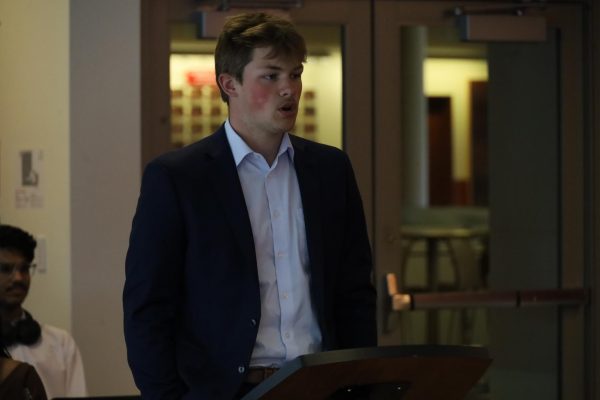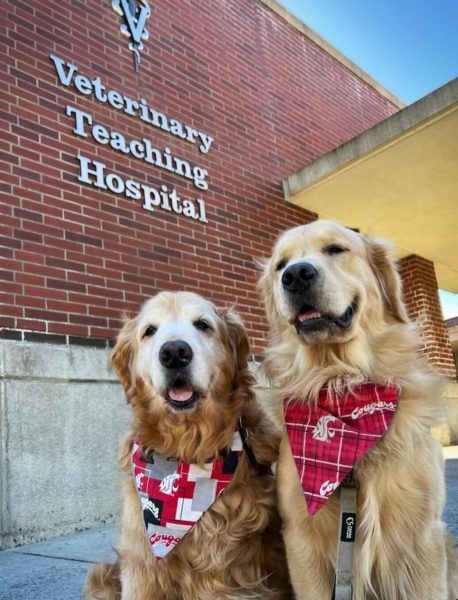Project aims to foster parent-teen communication about sexuality
December 12, 2016
WSU researchers are working on ways to encourage parent-teen communication about sexuality, including how to recognize the difference between healthy and abusive relationships and how to avoid sexual violence.
Kathleen Rodgers, associate professor in the Department of Human Development, studies adolescent-parent communication around sexuality, such as the role media plays in teens’ perception of sexuality and how parents help them interpret it. She said she wants parents and teens to discuss how to make decisions about sexuality.
“That is a difficult topic for parents and teens often to have,” she said.
Rodgers said young people usually want to talk with their parents, but have difficulty finding an opportunity to do so.
Stacey Hust, associate professor and chair of strategic communication with the Edward R. Murrow College of Communication, said she brought an expertise in media, sexual violence and gender studies to the team.
Hust said she and Rodgers spent the last three years talking to adolescents and first-year college students across the state. She said they gathered testimonials about their experiences with sexual harassment, coercion and dating violence.
“What we realized is that parents have a very unique role with their children in talking about these important topics,” Hust said.
The project they are currently working on is an extension of two previous projects, Rodgers said. In one of these, she said they showed 50 parent-teen groups music media clips and then examined the conversations that followed.
“Watching the music videos really facilitated parent-teen communication,” Hust said.
For some families, Rodgers said the conversation came very easily and was reciprocal. Others either turned into lectures or felt stilted and unnatural, she said.
“We were really interested in finding a way to help parents and teens have communication that is healthy communication around relationships,” Rodgers said.
In addition to this study, Rodgers said they were interviewing teens about some of the challenges they have with sexual violence. She said many female participants reported either having been victims of sexual violence, coercion or physical violence, or knowing someone who had experienced these.
She said sexual violence in this context is a continuum: On one end is harassment, uninvited touching or rude comments, and on the other end is sexual assault. She said anything along that continuum is what they consider sexual violence.
Rodgers said they want to target high school juniors and seniors in particular, or pre-college aged teens.
“There is a perception that the majority of people that come to college are sexually active or sexually experienced,” she said.
Rodgers said the research shows about 50 percent of people entering college have had intercourse before. However, she said not many teens are aware of that, and instead see college as a sexual free-for-all, which not everyone is ready for.
“How can parents and teens talk about this before they go to college to prepare them?” Rodgers said.
Rodgers said after gathering the data, they came up with the idea of using the teens’ stories to encourage conversation with other parent-teen groups. She said they will create cards that contain another teen’s story, which parents and teens would read through together and use to shift the conversation to their own experiences.
“It’s easier to talk about a third person,” Rodgers said, “and that is what these cards would be about.”
She said the cards will be professional-looking and laminated with visuals and stories having to do with sexual violence, dating and virginity. They will contain prompt questions so the parent and teen groups can have a conversation about these topics.
“We realized that we have these great testimonials from youth, that are real-life testimonials, that could perhaps help parents and teens talk about these topics in much the same ways as watching the music videos could,” Hust said.
Rodgers said the project is now just 40 percent of the way to its $2,000 goal. The money is being gathered through the crowdsourcing organization experiment.com, Rodgers said, but if their goal is not met by Dec. 13, all money donated will be refunded to the donors and the project will receive nothing. Rodgers said the purpose of the crowdsourcing is to get just enough money to be able to develop the materials and then do pilot testing for the idea and gather feedback.
If they meet their goal and initial tests are successful, Rodgers said they will apply for a $250,000 grant for three years from the National Institutes of Health. She said 49 percent would go straight to the university, and the remaining grant money would be used to compensate a graduate student assistant and participants, and to pay publication and research costs.
Hust said if they do not reach the $2,000 goal, they will remain determined. She said both her and Rodgers have experience working with limited budgets, but the funding would allow them to do the project much quicker. She said the team is committed to the project and to doing it well.
“I want parents to be more comfortable talking to their children about healthy romantic and sexual relationships,” Hust said, “so that children are empowered to make decisions that help them have healthy romantic and sexual relationships.”


















